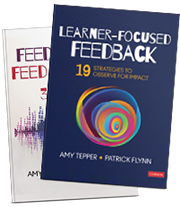Guest Author: Amy Tepper
Amy is a Senior Contributing Consultant with ReVision Learning Partnership
In April, I had the opportunity to participate on a panel for an “Information Night” about the Common Core Standards for parents based on current perspectives in classrooms. I was excited. I have been in over 100 classrooms in the past 12 months while serving in various roles from peer validator to embedded professional learning coach. I have observed some incredibly impactful practices. Just the other day, I was brought to tears watching Kindergartners engage in discussion about retelling information using textual evidence comparing two texts and was later blown away watching them evaluate peer writing with “I notice” statements. Share what I have seen? This was going to be great.
Anyone cringing yet? Well, I should have been, but I naively entered into this thinking I could ease parents’ concerns, fears and misunderstandings. I thought citizens could separate the issues and focus first and foremost on what our students need and have not been getting. Please know; by no means am I shouting from rooftops that CCSS is the panacea for our economic woes, crisis in achievement gap, and dismal international standing. But, I wanted to have a conversation about the imperative and urgent need behind the shifts.
What unfolded was far from the image I had conjured in my head. And I use “conjured” as a pun (can never take the English teacher out of me) because I am pretty certain I saw one or two torches wave and heard mutterings of “burn her at the stake.” Clearly I was wearing a scarlet “CCSS” (and yes, students learning in the age of CCSS will still be able to allude to great literary works.
One panelist likened the implementation of CCCS to child abuse. Seriously?
As I looked out at the 100 audience members, I only saw a handful representing the actual population I wanted to educate. I saw angry taxpayers who cheered for the opponents. They essentially booed those of us who shared success stories from actual time in classrooms and shouted denials of my (and my colleague’s) depiction of the current state of education. I did escape with my life, but have now resorted to touting my beliefs on a safer platform.
Having The Right Conversation
My colleague and friend Patrick Flynn is always telling me, “We must have the right conversation.” He reminds me that this is not to say that there is a wrong conversation. We just need to have the right conversation at the right time.
We have mountains of concern over testing–the funds required to complete online assessments, and issues over the actual SBAC questions. That is one conversation.
We have the “Bill Gates plot to take over America” buzz. Yet again, that is another conversation.
And then we have implementation concerns, and Governor Malloy’s task force is holding that conversation right now.
The conversation I wanted to have that night was about the actual standards and what our students need to know when they leave high school.
I was booed for saying things are a bit bleak in our schools. Can we not come together and admit that what we have been doing for so long is no longer working as effectively in our changing world? We all want the same things for our kids that our parents wanted for us (you know—be happy, achieve success, serve as a good member of a community and our planet, support and raise families). The key is that though the goals are the same, the steps our students need to take to achieve them have changed dramatically.
We still have countless employers and Fortune 500 companies begging us to improve student critical thinking, communication skills and problem solving abilities. This is still the conversation I want to have. As a side note, as I am still wary of proverbial stonethrowers (the electronic version), know that I do not view school simply as the grand creator of a talent pipeline, but it’s hard to ignore that nearly half of our current college grads are under or unemployed, that’s generally 284,000 who work at or below minimum wage (USDOL 2012).
Our Audience
As we begin to implement CCSS in our schools and districts, we must begin with the right conversation and it must occur with teachers, students and parents. Real discussions need to be framed around: Why did we shift? What is different but also the same? Why is it more challenging? What do we hope to gain? What can we expect? How can we support students in new and different ways? In my various roles, I am finding administrators and teachers cannot yet answer these.
No question, teachers are working hard, but we need to re-center their practices to achieve different outcomes. We need to frame their training around those essential overarching questions and address how students will apply the skills and strategies to ensure teaching practices are results-oriented and data-driven. Isn’t this how we ask teachers to plan a lesson?
Our Mirror
We must root our training in observation and evaluation and meet teachers where they are. I observed a first grade classroom a few weeks ago (though I love working with administrators, this opportunity is always an absolute joy and highlight of my week). Students were engrossed at their desks with an informational text of their choosing. Their task was to write one fact. I chatted with each student. They were incredibly excited to share about their books and topic, two or three leaning in to share and listen as I stopped by. But they were tasked with writing something they already knew. Here they held in their tiny hands beautiful and rich texts, only to list something they held in their heads before page 1. Oh, and on top of that, they were discouraged from talking to one another.
I was most struck by the child carrying a book about salmon. The book was far larger than his whole body. He went up to his teacher to show her an interesting fact, but she sent him back to his desk because she was conferring with a student. I wanted to curl up in the corner around that book with him. Who knew there were so many types of that tasty fish? Or let’s at least validate his excitement. And the pictures, oh the pictures. As a K-12 reading specialist and a classroom evaluator, I continue to witness the power of the first CCSS shift of increasing the volume of informational text in K-5. Yet, these students were dissuaded from holding discussions (that were academically rooted) and were never encouraged to share new facts learned.
Students joined the teacher on the carpet for the next portion of the lesson. They would be writing their own books about pets they would like to have. They were directed to select an animal about which they knew a great deal, because they were writing books that would contain facts they already knew. As they returned to their desks, they were excited to make their choice and chatted with neighbors. I actually heard the teacher say, “You are getting too excited. There is too much talking.”
How do we coach this teacher? Where do we start? Clearly, we must have that conversation about what it is ultimately we want our children to be able to do and which practices will lead them down that path. It has to start there.
Forging Ahead
As we have begun to implement CCSS across the state and country, we have made huge assumptions about teacher and administrator understanding of the big picture, of what we are trying to accomplish and how we should get there. As educators, it is our responsibility to provide students with every opportunity to be successful as they enter the world–a tough task as we are preparing kids for jobs that don’t exist yet. It is also our responsibility to ensure our teachers have every opportunity to be successful in this endeavor every day in every classroom.
This begins with the right conversation. Pull up a chair. Grab a snack. Let’s talk.




Amy you are so right on! But the good news is many teachers are doing it right. Now to help parents see that…